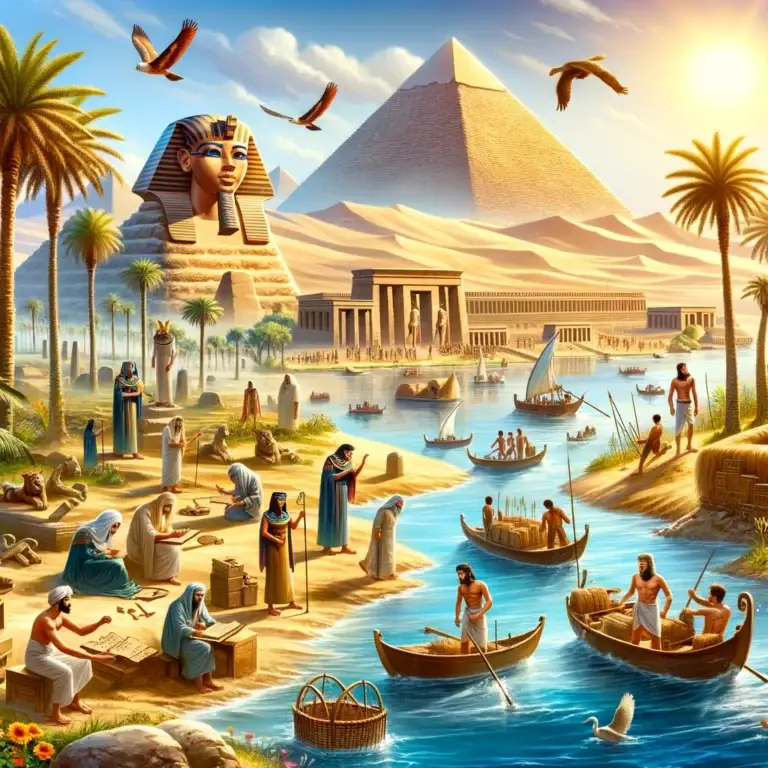Ancient Egypt

Table of Contents
The Beginning of Ancient Egypt
Ancient Egypt, flourishing from around 3100 BCE to 30 BCE, was a civilization along the Nile River in Northeast Africa. Renowned for its monumental architecture, including the pyramids and temples, Egypt was ruled by pharaohs who were considered divine.
Key figures like King Tutankhamun and Cleopatra left lasting legacies. The society developed hieroglyphic writing, advanced mathematics, and a complex religious system centered around gods like Ra and Osiris.
The annual flooding of the Nile facilitated agricultural prosperity, supporting a sophisticated culture. Ancient Egypt’s medical, engineering, and governance achievements established later civilizations, influencing art, architecture, and religion across the Mediterranean and beyond.
History of Ancient Egypt
Ancient Egypt, one of the world’s oldest civilizations, emerged around 3100 BCE when King Menes united Upper and Lower Egypt into a single kingdom, marking the beginning of the Early Dynastic Period.
The Nile River, which flows through Egypt, played a central role in the civilization’s development, providing fertile land for agriculture and transportation.
The Old Kingdom (2686–2181 BCE) saw the construction of iconic pyramids, including the Great Pyramid of Giza, built as tombs for pharaohs like Khufu, Khafre, and Menkaure.
During the Middle Kingdom (2055–1650 BCE), Egypt experienced a period of stability and cultural advancement, marked by the expansion of trade and the arts and the construction of significant architectural projects like the Temple of Karnak.
The New Kingdom (1550–1070 BCE) was a period of great prosperity and power, characterized by the reigns of famous pharaohs such as Hatshepsut, Thutmose III, Akhenaten, Tutankhamun, and Ramesses II. During this time, Egypt reached its territorial zenith, expanding its influence through military conquests and trade.
Ancient Egypt had a polytheistic religion, with gods and goddesses representing various aspects of nature and human life. Among the most important deities were Ra, Osiris, Isis, Horus, and Anubis.
The Egyptian civilization developed a sophisticated writing system called hieroglyphics, combining logographic and alphabetic elements. Hieroglyphs were inscribed on temples, tombs, and monuments and were deciphered in the early 19th century by scholars like Jean-François Champollion.
The Egyptian society was hierarchical, with the pharaoh at the top of the social and political hierarchy, followed by nobles, priests, scribes, artisans, and peasants.
The process of mummification, preserving the bodies of the deceased for the afterlife, was central to Egyptian religious beliefs. Tombs were filled with treasures and provisions for the journey into the afterlife.
Ancient Egypt’s decline began with the Persians’ conquest of the country in 525 BCE, followed by the rule of Alexander the Great and the Ptolemaic dynasty. The civilization eventually fell under Roman control with the death of Cleopatra VII in 30 BCE, marking the end of pharaonic rule and the beginning of Roman Egypt.
Related Links
Ancient Greece
Age of Exploration
Byzantine Empire
Ottoman Empire